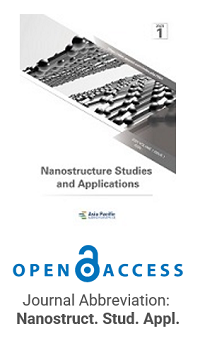
Publication Frequency
Semi-annual
Journal Articles
Search
Search scope
Journal Center
Asia Pacific Academy of Science Pte. Ltd. (APACSCI) specializes in international journal publishing. APACSCI adopts the open access publishing model and provides an important communication bridge for academic groups whose interest fields include engineering, technology, medicine, computer, mathematics, agriculture and forestry, and environment.
Volume Arrangement
Unlocking the potential of molecular self-assembly: From nanotechnology to sustainable materials
Article ID: 2185
Vol 1, Issue 1, 2023
DOI: https://doi.org/10.54517/nsa2185
Vol 1, Issue 1, 2023
Download PDF
Abstract
N/A
References
- Lehn JM. Supramolecular Chemistry. Science 1993; 260: 1762–1763. doi: 10.1126/science.8511582
- Pochan D, Scherman O. Introduction: Molecular self-assembly. Chemical Reviews 2021; 121: 13699–13700. doi: 10.1021/acs.chemrev.1c00884
- Katsuhiko A, Hill JP, Lee MV, et al. Challenges and breakthroughs in recent research on self-assembly. Science and Technology of Advanced Materials 2008; 9: 014109. doi: 10.1088/1468-6996/9/1/014109
- Min Y, Akbulut M, Kristiansen K, et al. The role of interparticle and external forces in nanoparticle assembly. Nature Materials 2008; 7: 527–538. doi: 10.1038/nmat2206
- MacLeod JM, Rosei F. Molecular self-assembly on graphene. Nano Micro Small 2014; 10(6): 1038–1049. doi: 10.1002/smll.201301982
- Foster JS, Frommer JE. Imaging of liquid crystals using a tunnelling microscope. Nature 1988; 333: 542–545. doi: 10.1038/333542a0
- Dhibar S, Dey A, Dey A, et al. Development of supramolecular semiconducting Mn (II)-metallogel based active device with substantial carrier diffusion length. ACS Applied Electronic Materials 2019; 1: 1899−1908. doi: 10.1021/acsaelm.9b00410
Supporting Agencies
Copyright (c) 2023 Subhendu Dhibar
License URL: https://creativecommons.org/licenses/by/4.0/

This site is licensed under a Creative Commons Attribution 4.0 International License (CC BY 4.0).
Editor-in-Chief

Prof.Stefano Bellucci
Laboratori Nazionali di Frascati, Italy
News & Announcements

